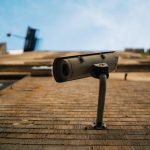In modern enterprise environments, data processing speed and storage reliability directly impact productivity, customer experience, and business continuity. As traditional spinning hard drives (HDDs) reach their performance limits, businesses are increasingly adopting Server & Enterprise SSDs to meet today’s demanding workloads.
But not all SSDs are created equal. Choosing the wrong type of SSD can result in wasted budget, performance bottlenecks, or system instability. In this article, we’ll explain the differences between common SSD interfaces (SATA, SAS, NVMe), guide you on how to select the right one for your use case, and share why La Sysco is the trusted name for reliable Server Components.
There’s so much more to discover—browse our related posts!
Why SSDs Have Become Essential in the Data Center
The limitations of HDDs—mechanical delays, slower seek times, and high power consumption—make them inadequate for today’s:
- Virtualized environments
- High-transactional databases
- Real-time analytics
- Customer-facing applications that require low latency
In contrast, enterprise SSDs deliver:
- Sub-millisecond latency
- Up to 100x more IOPS than HDDs
- Improved energy efficiency
- Lower failure rates over time
Common SSD Interface Types for Servers
Let’s break down the three most common SSD interfaces used in enterprise settings:
1. SATA SSDs (Serial ATA)
SATA SSDs are the most cost-effective SSD solution and are typically used as drop-in replacements for HDDs in existing systems.
Pros:
- Widely compatible with existing server hardware
- Affordable per GB
- Adequate for light to moderate workloads
Cons:
- Limited to ~550MB/s throughput due to SATA III interface
- Single-port access, limiting redundancy
- Not ideal for high-performance environments
Best For:
Backup servers, cold data, OS boot drives, or read-heavy applications.
2. SAS SSDs (Serial Attached SCSI)
SAS SSDs are designed for higher reliability, dual-port access, and better performance compared to SATA.
Pros:
- Throughput up to ~1.2GB/s
- Dual-port for redundancy and failover
- Better error correction and endurance
- Ideal for RAID configurations
Cons:
- More expensive than SATA
- Requires SAS controller (not compatible with standard SATA-only servers)
Best For:
Mid- to high-performance workloads, virtualized environments, and large transactional databases.
3. NVMe SSDs (Non-Volatile Memory Express)
NVMe SSDs offer next-generation performance by leveraging the high-speed PCIe bus instead of legacy storage interfaces.
Pros:
- Up to 7GB/s throughput (PCIe Gen 3/4)
- Very low latency and high IOPS
- Ideal for parallel data access and real-time applications
Cons:
- Higher price per GB
- Requires NVMe-capable motherboard or U.2/M.2 interface
- More sensitive to heat—proper cooling needed
Best For:
High-frequency trading, video editing, AI/ML training, large databases, and I/O-intensive workloads.
Choosing the Right SSD: Use Case–Based Guide
| Business Need | Recommended SSD Type | Justification |
| General-purpose server | SATA SSD | Low cost, good enough for OS and apps |
| Database server | SAS or NVMe SSD | Reliable, high endurance, and faster throughput |
| Virtualization host | NVMe SSD | Handles multiple simultaneous VM read/writes |
| Backup/archive server | SATA SSD | Affordable for cold data |
| Mission-critical apps | NVMe SSD (RAID-configured) | Extreme performance with redundancy |
| High-availability cluster | Dual-port SAS SSD | Redundant access for failover scenarios |
Enterprise SSD Features to Look For
Regardless of interface, enterprise-grade SSDs come with features that aren’t found in consumer models:
Power-loss protection: Ensures data in transit is not lost during a power outage
Endurance rating (DWPD/TBW): Specifies how much data can be written to the drive over its life Over-provisioning: Improves performance consistency and lifespan
Firmware-level error correction: Crucial for data integrity in business-critical environments
SMART monitoring: Enables proactive replacement before failure
SSD Deployment Tips for Performance and Longevity
- Don’t overfill SSDs: Keep at least 10–20% free space to maintain write performance
- Use SSDs in RAID only with proper firmware: Not all SSDs perform well in RAID arrays without TRIM passthrough
- Enable wear leveling and garbage collection via firmware/OS settings
- Ensure proper cooling: NVMe SSDs especially benefit from heatsinks or airflow management
Why La Sysco is the Trusted Choice for Enterprise SSDs
At La Sysco, we offer a wide range of high-performance Server & Enterprise SSDs designed to meet the needs of data centers, cloud environments, and large enterprises.
Here’s why businesses trust us:
- Full selection of SATA, SAS, and NVMe SSDs
- Industry-certified high endurance models
- Custom recommendations for workload-specific configurations
- Fast shipping and U.S.-based support
- Official sandisk authorized distributor—genuine enterprise SSDs guaranteed
Whether you’re building new infrastructure or upgrading legacy systems, La Sysco ensures you get the right SSDs with the right performance profile.
Final Thoughts
Choosing the right Server & Enterprise SSDs is not just about performance—it’s about matching your hardware investment to your actual business needs. Selecting the wrong drive type can lead to unnecessary costs, system inefficiencies, or data bottlenecks.
By understanding the trade-offs between SATA, SAS, and NVMe SSDs—and partnering with a trusted supplier like La Sysco—you can confidently upgrade your infrastructure with the speed, reliability, and endurance your business demands.
Explore our full lineup of Server Components and consult our team today for tailored SSD solutions that work for you.
You’ll find even more guides and resources on 2A Magazine .







